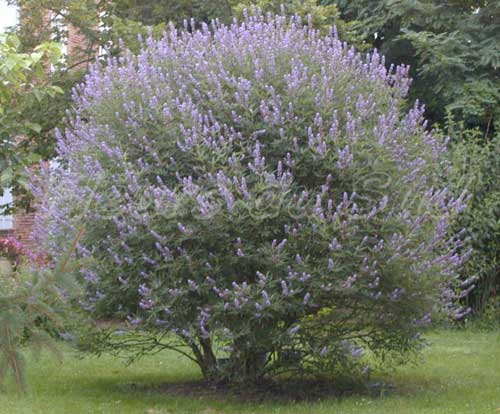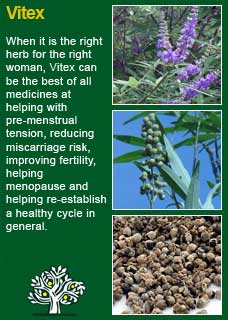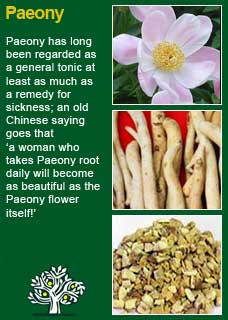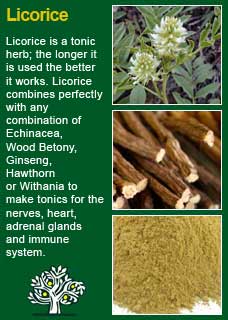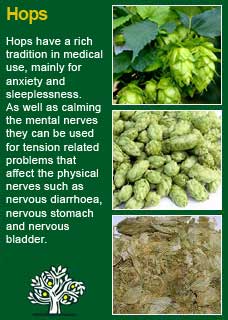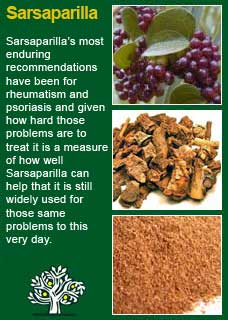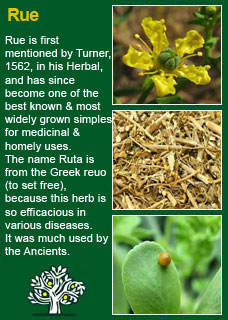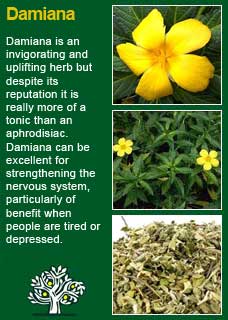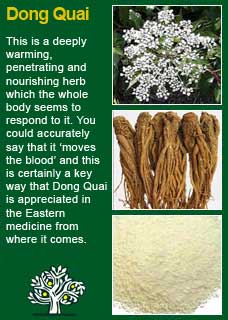
|
|
|
|||||||||||||
| Our Pages ABOUT CONSTITUTIONAL MEDICINE
|
With deep thanks and appreciation for great Australian herbalist Ruth Trickey, now retired. The following notes are based on her book 'Women, Hormones & the Menstrual Cycle' and give detailed information for the person who is dealing with PCOS for themselves or someone they care for and who needs to know that there are a number of viable options in natural medicine that can work alongside, or as an alternative to, the conventional medical approaches that they will have been much more readily exposed to.
Polycystic ovaries literally mean a condition associated with many (poly) cysts in the ovary or ovaries. Polycystic ovarian syndrome (PCOS) however, is a much more complex condition, in fact really a series of conditions or syndromes, each of which has the common finding of multiple ovarian cysts. With the use of ultrasound testing it has been possible to identify that up to 20 percent of all women have multiple ovarian cysts! Some of these women have both normal cycles and periods and experience no problems at all; others may have a range of symptoms including irregular menstruation or amenorrhea (absent periods). All of these women have polycystic ovaries, but only those with additional hormonal irregularities have polycystic ovarian syndrome. In short, the condition that presents as multiple simple cysts on the ovaries is properly referred to as polycystic ovaries. The more complicated syndrome, which includes a variety of additional hormonal abnormalities and ovarian cysts, is called polycystic ovarian disease, PCOD, or polycystic ovarian syndrome, PCOS PCOS is accompanied by a tendency to produce too much androgen (male hormones), and to ovulate erratically. Other symptoms of PCOS can be failure to menstruate, failure to ovulate, hirsutism (unwanted hair-growth), and obesity. These are, however, only statistical trends, a woman with genuine PCOS may still have none, any, or all of these symptoms. Making an accurate diagnosis of PCOS can be quite complicated because the combination of symptoms commonly encountered; the ovulatory failure, hirsutism, obesity etc, is by no means unique to PCOS. For example, women who have other endocrine disorders, such as Cushing’s syndrome, inherited adrenal disorders and disorders of the thyroid gland may develop very similar symptoms.
PCOS is usually suspected because of the symptoms of menstrual irregularity or an absent period (amenorrhoea) in conjunction with such things as male-pattern hair growth, obesity, and possibly infertility. An ultrasound of the ovaries will detect multiple ovarian cysts and blood tests usually reveal an elevated LH level (luteinizing hormone) with either relatively constant or low FSH levels (follicle-stimulating-hormone) Before a firm diagnosis of PCOD can be made; all the other possible types of endocrine abnormalities really need to be excluded as potential causes. This usually involves a physical examination, blood tests and x-rays in addition to the ultrasound to check for ovarian cysts.
A number of common signs and symptoms have been seen to characterise PCOS. ~ PCOS is the most common cause of ovulatory failure, and about 75 percent of women with PCOS develop infertility without treatment
It has been found that many women with PCOS have similar early menstrual patterns. Whilst the age of menarche (when menstruation begins) is similar to other young women (who do not develop PCOS) there are several distinct patterns of difference:
Body mass index is a method used to determine whether a person's weight is in the correct range for their height. The BMI is expressed in numbers. Less than 20 is considered to be underweight
Although it is now generally agreed that PCOS originates in the ovary, a number of other factors appear to make important contributions. For instance, as mentioned above, excess weight gain seems to be able to initiate hormonal changes that can transform a symptom-free condition into a full-blown case of PCOS. The hypothalamic-pituitary unit and the adrenal glands are also involved in PCOS, but their relative importance varies from person to person. It has been suggested that other endocrine glands like the thyroid might be associated with PCOS some of the time. PCOS may also be related to blood sugar abnormalities or be inherited. Around 40 percent of the women in families with PCOS will have the condition, but by no means will all of these women develop symptoms. Indeed, it may well be that a number of different triggers working together might interact in susceptible women to cause PCOS. An open mind in investigating the cause is essential in these kinds of ‘multifactorial conditions’. The following sections look at the potential causes of PCOS in some more depth
Women with PCOS produce low levels of ovarian hormone called oestradiol and excessive levels of ovarian androgen hormones. This seems to support the view that the condition originates as an abnormality of the ovary. The androgens produced within the follicle prevent ovulation and normal follicular development. The end result is the formation of small cystic follicles instead of mature follicles with the capacity to ovulate. Some women with PCOS have one ovary that is normal and one that is polycystic. In these cases, this also suggests a primary ovarian problem because a hormonal imbalance that originated in other endocrine glands would affect both ovaries
The fatty tissue, muscle and the brain have the capacity to convert androgens into oestrone, by a process known as aromatisation. Importantly, when women are overweight, the conversion of androgen to oestrone is enhanced and much more oestrone is produced. This can lead to chronically high, non-variable levels of oestrogen. This increased conversion of androgens in the fatty tissue may affect PCOS, and some women are able to significantly control the severity of the condition, and the regularity of their menstrual cycle, by reducing weight. It seems likely that this tendency is inherited. Women with PCOS do tolerate being thin better than other women. They maintain their bone-density even when their body mass index is low, and continue to ovulate (or start to) when they are thin. For these reasons, some researchers speculate that women with PCOS will reproduce better in families, and pass on this tendency to their daughters who will also have the reproductive edge when times are grim. Women without PCOS and ‘normal ovaries’ function best when there is an abundance of food. They do not have the hormonal profile to tolerate thinness easily, they stop menstruating or ovulating if they lose weight or are too thin; and are most fertile and have better bone density when the food supply is regular and their body weight is within the normal range. Many women with PCOS and obesity also have problems associated with insulin, known as insulin resistance. Insulin resistance develops because of an insensitivity of cellular insulin receptors to insulin. Insulin levels are normal, or even elevated, but the insulin is incapable of transporting blood sugar(glucose) into the cell. This leads to elevated blood glucose levels but low cellular glucose levels, which, further down, regulate the receptivity of cells to insulin. Insulin resistance is often seen in combination with obesity with a high abdominal distribution of fats
Another theory is that PCOS can be triggered by excessive adrenal production of androgens. These androgens are converted to oestrone in the fatty tissue, causing blood levels of oestrone to rise. The elevated oestrone levels, which do not have the usual cyclical variation, then stimulate the production of excessive amounts of luteinizing hormone and insufficient FSH. The excessive level of luteinizing hormone then triggers androgen hormone production from the ovaries and the cycle is perpetuated
Elevated levels of luteinizing hormone are generally accepted as being caused by androgen excess. Some researchers, however, have suggested that there may be a primary problem in the hypothalamus or pituitary gland. Inappropriate hypothalamic secretion of gonadotrophic hormone can cause an increase in the pituitary’s production of luteinizing hormone, which then causes an increase in the production of androgens. Excess androgens increase the secretion of luteinizing hormone and again the cycle becomes self-perpetuating. The other pituitary hormone, FSH (follicle stimulating hormone) is chronically low when women have PCOS. Low FSH is usually thought to be a casualty of the chronically elevated and unvarying oestrogens. Low FSH reduces the capacity of the cells in the follicle to convert androgen to oestrogen, and creates another self-perpetuating source of imbalance in the hormonal levels
Elevated acyclic oestrogen In PCOS, oestrogen levels are elevated and non-variable, unlike the fluctuating levels that are secreted from the ovary during a normal cycle. These oestrogens arise from the peripheral (outside the ovary) conversion of androgens to oestrogen (mainly the androgen hormone androstenedione to oestrone). Ovarian oestrogen production is chronically low due to the abnormal follicular development. In other words, the oestrogen levels are very high, but it is the wrong sort of oestrogen from the wrong source (androgens)
Androgens can exert masculinizing effects, but usually circulate in small amounts in the blood of all women without causing any problems. If a woman has PCOS, however, the levels of androgens are elevated, and though still well below the normal male levels, they contribute significantly to the hormonal imbalance and the symptoms of PCOS. These androgens arise from the ovary and the adrenal gland.
SHBG is the carrier protein for both oestrogen and testosterone, but is reduced by high levels of androgen and obesity. Normally most of the circulating testosterone would be bound to SHBG, making it less capable of exerting masculinizing effects on skin and hair. When the level of SHBG is depressed, unbound testosterone circulates in the blood serum and can cause acne and male-pattern hair growth
There are three main aspects to the conventional medical treatment of PCOS 1) Reduce the likelihood of cancerous changes occurring in the lining of the uterus (the endometrium) The risk of endometrial cancer is minimised by the administration of cyclic hormones such as the Pill; or by small doses of progesterone for 7-10 days of each month. The progesterone either taken alone, or with the pill, initiates changes in the endometrium that are similar to those in the normal cycle. When progesterone is stopped, menstruation occurs.
There is little difference within natural medicine from the above objectives in treating PCOS; obviously what does vary is the method. The natural therapist's treatment of PCOS is also directed at reducing the masculinizing effects of the excess androgens, stimulating ovulation, and protecting the endometrium. As much as we would wish it otherwise it has to be honestly said that when the condition is severe, natural remedies by themselves may not be sufficient to improve the hormonal imbalances of PCOS. A more suitable treatment may be to combine natural remedies and drugs, especially when there is a serious risk of endometrial change, or severe masculinizing effects from androgens. Conventional and natural medicines can and do work very well alongside each other. Both systems have their strengths, and their weaknesses. Simply aiming for the best possible outcome is the way to guide the right choices of therapies. The emphasis of natural treatments depends on the combination of the symptoms and the desired outcome. Women who want to become pregnant will be given treatments to stimulate ovulation; when amenorrhoea is a problem, initiating menstruation is necessary to protect the endometrium; and when excess hair growth is a concern, the treatment should focus on the elevated androgen levels
For the lining of the uterus, the endometrium, to be adequately protected against cellular change caused by the elevated and unvarying levels of oestrogens, menstruation should occur at regular intervals. Surprisingly, the ideal minimums of these intervals actually vary a lot, depending on the weight and age of the woman. Studies have shown that women who are within the normal range for weight, and who are 35 or less, only need to have at least three periods every year. Women who are older than 35, (and particularly when they are significantly overweight), should menstruate at least about twice as often. Obese women, who are additionally likely to have more problems with PCOS, should menstruate as close to monthly as possible. For this reason, using the Pill may be the best treatment option when women are obese and at a particularly increased risk of endometrial hyperplasia or cancer. In more normal circumstances, or if a woman is unable, prefers or chooses not to use the pill then there are a group of herbs that have been traditionally used to bring on menstruation and these may well be recommended over the short-term. Re-establishing a natural cycle being the simple objective. Perhaps most important (and effective) amongst these herbs are the potent emmenagogues: Ruta graveolens (Rue) and Artemesia vulgaris
The herbs that have been historically used for ovulatory disorders are the ‘female tonic herbs’. Principal amongst these are Dong Quai and Paeonia, both of which have documented additional benefits in normalising follicular development and reducing the incidence of ovarian cysts. Female tonics usually contain phyto-oestrogens or steroidal saponins. They exert a weaker effect than oestrogen itself but may normalise function by strongly improving the function of the hypothalamic-pituitary unit that, in a sense, conducts the orchestra of hormones
This can become a top priority in treating PCOS, especially as the symptoms of androgen excess can cause much distress. Fortunately, there are some effective methods to reduce excess androgens. Vitex Agnus-Castus is often prescribed for menstrual irregularities and for conditions assumed to be associated with androgen excess (for example it is frequently used with great success for hormonal acne). Also, the herbs Smilax sarsaparilla and Damiana have been shown to block the effects of androgens by preventing them from reacting with receptor sites on body cells. This kind of action in a medicine is known as competitive inhibition and can be rapidly effective. Another way of resolving the problem is to increase the rate at which androgens are converted (aromatised). Licorice root, and a component of Paeonia called paeoniflorin, greatly increase the aromatisation process and reduce testosterone levels. It should be noted, however, that as useful as these herbs are, they will not work as quickly as drugs to block excess androgens. When excess hair growth (or loss) is a serious problem, the best course of action may be a short-term program of drug-therapy first, then followed by herbal remedies to maintain the status quo, an approach that is likely to achieve both fairly quick results along with a gentle management of the condition over time Further to any medicine, reducing weight or maintaining an ideal weight will definitely help to control androgen levels when a woman has PCOS. Towards this goal, regular meals, a low-fat intake, and 30-40 grams of fibre daily will certainly help. Morning exercise, such as brisk walking or multiple repetitions of light weights (that increase the heart rate) can also greatly increase the rate of weight loss. Losing weight, fibre and a high phyto-oestrogen containing diet increase the levels of sex hormone-binding globulin (SHBG), which binds to androgens, making them unavailable. When excess hair-growth or androgenic alopecia (baldness) is the primary concern, treatment must be continued long term and it is vital that the chosen remedies are safe for sustained use. Androgen excess is not a condition for self-treatment
Elevated LH occurs in association with excess androgen production and will decline once androgen production slows down. Three herbs: Cimicifuga, (Black Cohosh) Humulus (Hops) and Lycopus have a direct impact on luteinizing hormone. Of these, Humulus and Cimicifuga tend to be the most applicable. Humulus can most usefully be given when a fair amount of stress and nervous tension accompany the PCOS; it can be profoundly relaxing. Lycopus is usually given to treat hyperthyroidism, but will also reliably reduce the levels of luteinizing hormone as well as follicle stimulating hormone
Women with PCOS are prone to blood sugar abnormalities, which can develop as a result of obesity and insulin resistance. It is not entirely clear why the abnormal insulin response occurs but the treatment is weight reduction and to also assist the insulin to pass into the cells. The nutrients that help in this regard are magnesium, zinc, manganese, and chromium. Herbs such as Gymnema, Fenugreek and the Bitters can also be most helpful. Increasing fibre intake also stabilises blood sugar levels. Thirty to forty grams daily as part of whole foods is usually very adequate, especially when spread over the entire day. Fibre has the additional advantage of increasing SHBG, which reduces the levels of biologically active androgens, and lowers blood lipids
The dietary intake of phyto-oestrogens can greatly improve the oestrogen imbalances associated with PCOD. Phyto-oestrogens are plant compounds that are capable of binding to cellular oestrogen receptors within the body. You will be doing your body a favour by eating phyto-oestrogen rich foods in any case. For example, a high intake of phyto-oestrogens is thought to explain why hot flushes and other menopausal symptoms rarely occur in cultures in which people consume a predominantly plant based diet. Increasing the intake of phyto-oestrogens also helps inhibit osteoporosis. In addition, a diet high in phyto-oestrogens has been shown to decrease the risk of breast and colon cancer. Experimental studies have shown that phyto-oestrogens are extremely effective at inhibiting mammary tumours, not just because they occupy oestrogen receptor sites but also via other anticancer mechanisms The property of phyto-oestrogens that particularly endears them to natural therapists is the way they help the body achieve a natural balance. For example, if oestrogen levels are low, phyto-oestrogens will cause an increase in oestrogen effect since they have some mild oestrogenic effects of their own, if however, oestrogen levels are too high then the same phyto-oestrogens will cause a decrease in oestrogen since they can bind to oestrogen receptor sites and compete with the available oestrogen. This widely contrasts with drug therapies that more or less enforce a certain hormonal level, phyto-oestrogens help enable the body to regulate and balance its own hormones beneficially Soy products do deserve a special mention and they are the most widely publicised source of phyto-oestrogens. The soybean is native to China where it has been cultivated for at least 13,000 years; the ancient Chinese regarded the soybean as their most important crop and a necessity for life. Although soy products will not appeal to everyone they can provide a relatively easy way to achieve a high phyto-oestrogens intake, especially if you can find ways to enjoy soymilk. Phyto-oestrogens are present in many foods and may easily be increased in the diet to a therapeutic level by simply being mindful to include some of the following foods
* contains especially high levels of phyto-oestrogens
I can share from my own experience that the greatest results in my own practice have been when we have used a ketogenic diet to address the insulin resistance that seems to be so much at the heart of PCOS. Following a ketogenic diet has not just improved PCOS, in a number of cases it has apparently cured it. A short write up on getting into ketosis is written up here but the main article to read on this site is on the metabolic syndrome, which seems to be the key driver in all the women I have personally worked with who are suffering from PCOS, this is found here Eating right for the genotype is the most likely path to cure PCOS, but at least for the first few months it can be of much help to nudge the hormones with the potent support from Nature and I especially wouldn't be without Vitex, Dong Quai, Licorice root or Paeony root in treating PCOS. A combination of some or all of these herbs has always seemed to help, often greatly so. Of course, there are other herbs, and Ruth has mentioned many of them, that can be of further help too and, as mentioned at the beginning. I want to warmly encourage any woman dealing with this condition to consider finding a good herbalist to help her with what is clearly a complex and multi-factorial problem. Finally, you might benefit from learning about your constitution to know what kind of foods, herbs, exercises etc. will work especially well for your health in general as well as what might further help with PCOS. There is a brief introduction to the subject here and a more detailed section on working out which constitution you are here
Please understand that I cannot personally advise you without seeing you in my clinic. |
|
|
© 2011 R.J.Whelan Ltd
